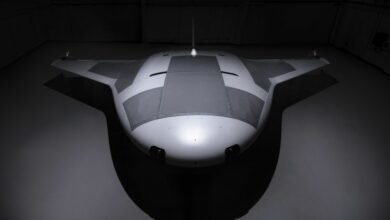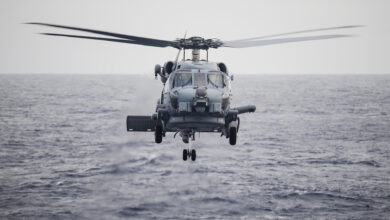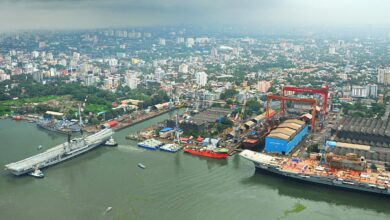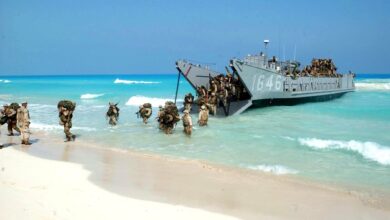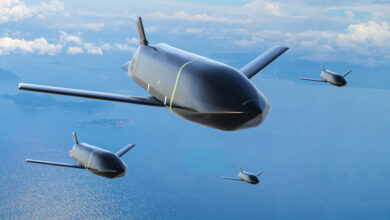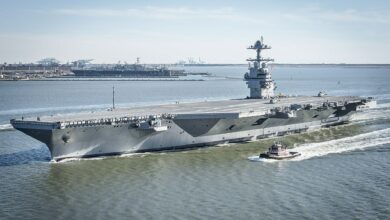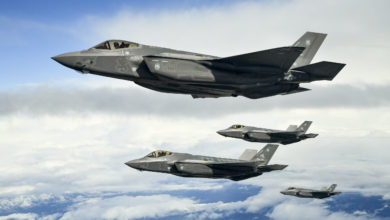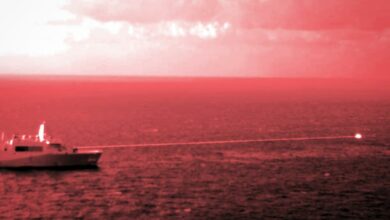General Dynamics integrates Naval Strike Missile on USS Gabrielle Giffords LCS
The littoral combat ship sailed earlier this month on a rotational deployment to Southeast Asia
General Dynamics Mission Systems has integrated the over-the-horizon Naval Strike Missile capability onto the Independence-variant Littoral Combat Ship USS Gabrielle Giffords (LCS 10), the company said in a release.
General Dynamics adapted the ship’s navigation system to provide unique signals to the missile system, designed the operational station in the Integrated Command Center and system for providing specialized power to the missile system, the Thursday, September 26 release said.
“The open-architecture design of the ship’s computing environment and electronic systems made the design and integration of the new NSM system feasible in an accelerated timeline,” said Carlo Zaffanella, vice president and general manager of maritime and strategic systems at General Dynamics Mission Systems.
General Dynamics, the Independence-class LCS systems integrator, will serve as the prime contractor for the integration and installation of the NSM capability on all ships of the class already in service.
The U.S. Navy commissioned the first littoral combat ship, USS Freedom, in November 2008. It was intended to be a fast, agile multipurpose warship for coastal operations, with the ability to counter various threats including fast surface craft, submarines and mines. The mono-hull Freedom-class LCS is 115 metres long and has a displacement of 3,500 metric tons, while the later trimaran Independence-class is 127 metres long with a displacement of 2,784 metric tons.
USS Gabrielle Giffords left San Diego on September 3, deploying to the Indo-Pacific theater, Defense News reported. The ship is on a rotational deployment to Southeast Asia, the fifth littoral combat ship to deploy to the region.
Kongsberg-Raytheon partner on Naval Strike Missile
Raytheon and Norway’s Kongsberg announced they had formed a teaming agreement to compete for U.S. Navy programs in 2015, including pitching Kongsberg’s Naval Strike Missile for the Over-the-Horizon Weapon System for the LCS.
Last May, Raytheon was awarded a $15 million contract to produce Naval Strike Missiles for the LCS, and in December was awarded an almost $33 million modification. The contract includes options that could bring the cumulative value to almost $850 million.
Kongsberg says the Naval Strike Missile has an operational range of more than 200 km (125 miles, 108 nautical miles) and flies at up to Mach 0.95 (1,160 kph). It is designed for use in confined, littoral and on the open sea, and can strike both sea and land targets.
The low-observable sea-skimming missile uses a combination of GPS, inertial navigation and terrain recognition, and includes an advanced adjustable high resolution imaging infrared seeker which utilizes autonomous target recognition to ship class, with a precise hitpoint for each ship class. It employs programmable endgame maneuvers to penetrate defenses.
It has been in service with the Royal Norwegian Navy since 2012, and the Polish Navy uses the NSM for use on coastal defense batteries. It has been selected by the Royal Malaysian Navy and German Navy.
The Naval Strike Missile was first demonstrated on the Independence-class USS Coronado LCS in 2014. Rear Admiral Peter Fanta said in January 2016 that the U.S. Navy was aiming to have a missile on the LCS by the end of that year, USNI reported. That ambition was thwarted by a lack of funds.


